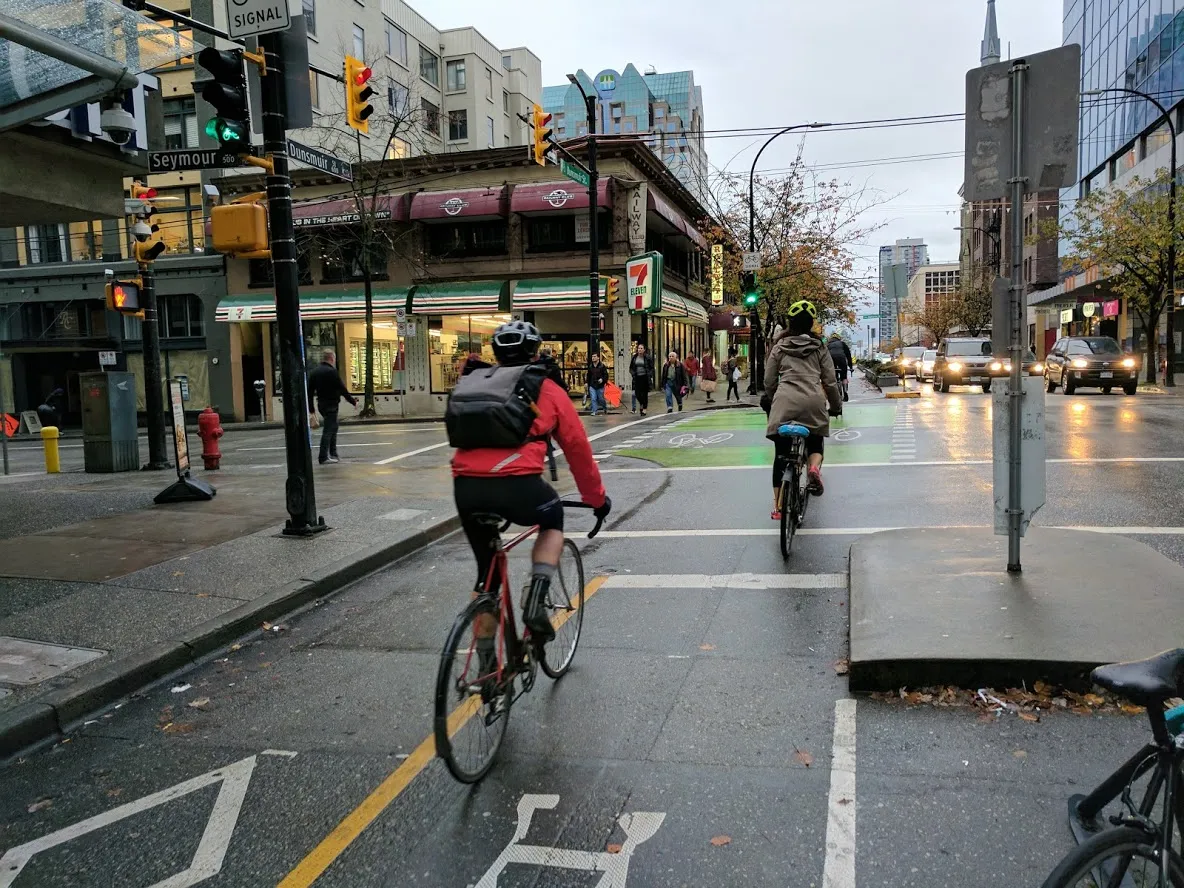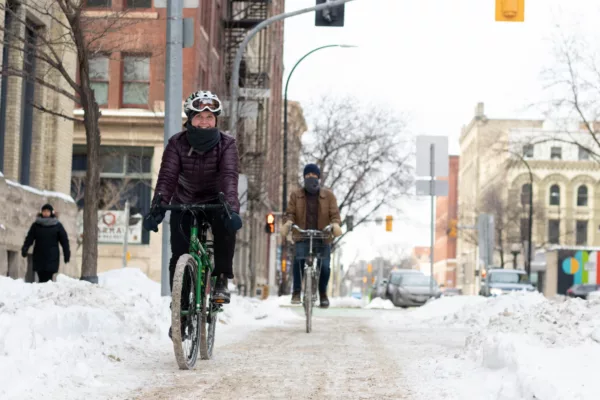Looking forward to jumping on a bike!
When I planned my trip to Vancouver in the fall, there were a few things I was certain I wanted to do. Eat seafood, visit the parks, go on hikes and most of all, cycle around the city. Here in Winnipeg, I bike all the time, and not just for leisure. Grocery store runs, getting to the homes of my friends, and my work commute are all done by bike between the spring and fall, even with our limited infrastructure options. While I couldn’t wait to get out there, part of me was slightly hesitant. Vancouver is a huge bustling city, and I was a bit concerned about safety, and my ability to keep up. After my first hour on the bike, my worries disappeared.
On the right is a photo from my second day of the trip, enjoying a really sunny day on a rented bike.

What Was Different?
First of all, there are bikes lanes everywhere! Protected lanes, vibrantly painted lanes and shared use paths. They are also all connected. One issue here in Winnipeg is that our bikes routes are disconnected. They will often only run for a couple of blocks and then end, leaving commuters shooting out into traffic, or having to find alternative paths to get to where they are going. In Vancouver, I was able to bike from Mount Pleasant to Granville Island entirely on marked lanes. I also made it from my bike rental place in Yaletown, all the way to Stanly Park, only having to dip into traffic once to make a left turn.
Another positive aspect of Vancouver’s infrastructure is the clearly marked lanes. Markings indicated whether the path was for pedestrians or cyclists and often if they were running parallel to each other, there would be signage every couple of metres reminding people where they should be. When lanes were mixed use, they would often be wider, allowing cyclists to pass pedestrians easily. Winnipeg has many lanes that will often have markings on the ground indicating whether it is for bikes or pedestrians, however they often wear away and because there is not always signage present, it can become confusing. Having clear marked lanes, lots of signage and wide lanes is beneficial for new cyclists and tourists, without impeding on experienced cyclists.
Lastly, its all about the attitude surrounding active and sustainable transportation. Vancouver states that cycling is one of the cleanest forms of transportation and they are finding that more and more people are choosing it as an option. Therefore they continue to expand their network! It’s refreshing to see a city that sees other forms of transportation as equally important to car traffic. This is something that is seriously lacking in Winnipeg.
Takeaways
While increased infrastructure is obviously needed in Winnipeg to be able to reach the standards of Vancouver, attitude changes are also crucial. Understanding that it is possible to have active and sustainable transportation in Winnipeg, even in winter, is the first step. It can be done! Those who drive as their primary form of transportation need to look at cyclists as fellow commuters, who are all trying to get to work etc. Lastly, politicians in Manitoba must consider that to build better, more assessable cities, that are also sustainable, they should embrace the opportunity to expand active and sustainable transportation options.
Click here to see a map of Vancouver’s cycling network.
If you interested on learning more about the importance of shifting infrustructure priorities, visit Anatomy of a Pothole!



